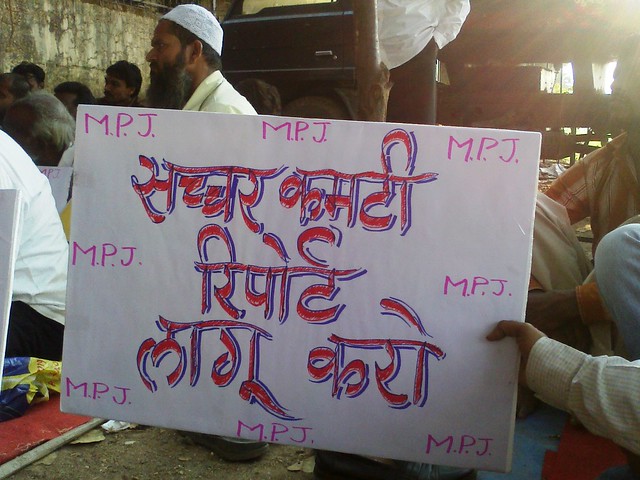By Md. Ali, TwoCircles.net,
New Delhi: This month marks five years of the submission of the Sachar Committee Report, which was commissioned by the Prime Minister Manmohan Singh to prepare a report on the latest social, economic and educational condition of the Muslim community of India. On 17th of November 2006, the Sachar report was presented to the PM Manmohan Singh and on 30th of November, the same year it was submitted in the Parliament. To mainstream Muslims and ensure equity and equality of opportunities to them in residential, work and educational sector, the Committee had proposed multiple suggestions to be adopted, with a suitable mechanism.
Talking about the impact of the Sachar Report, needless to say, that the report radically altered several things. First of all, it was the first ever strong official confirmation of the socio-economic backwardness of Muslims in India. The report said that even after more than sixty years since India’s independence, Muslims, the second majority community in the country, are more backward than even SC/ST in some areas. Along with this confirmation, came the exposure of the myth of “minority appeasement” which the BJP and Hindu Right have been propagating since ages.

But the biggest turn, which the Sachar report brought was that it changed the paradigms of Muslim politics in India in politics and in real politicks as well. On the one hand, if it was the master stroke of the Congress led UPA, which delivered party the Muslim votes; on the other, Sachar report provided the community with a strong proof and reason to ask for the government intervention in the form of affirmative actions including reservation to the backward members of the community.
Even though the UPA announced several times that it had “in principle” accepted the recommendations of the Sachar Committee, the last five years journey for the report is marked by pressure and delay tactics as well as negotiations between the community and the UPA to get Sachar’s recommendations implemented on the ground, at state and central levels.
There were several prominent consequential steps taken by the government to show that it was taking the Sachar report seriously. Even though it happened few months earlier but no body can underestimate the symbolism of it; for the first time in the history of Independent India, a separate ministry, Ministry of Minority Affairs (MMA) was established just to look after the welfare of minorities of the country in 2006-, the same year in which Justice Rajendar Sachar submitted his report. Its total budget for 2011-12 is Rs 2830 crore.
Several programmes and schemes were launched like marking every district with at least 25% of Muslim population as the Minority Concentrated Districts (MCDs) and inclusion of MCDs into Multi-sectoral Developmental Plans (MSDP), pre and post-Matric scholarship schemes, and establishment of National Minorities Development and Finance Corporation (NMDFC).
But most important of all the schemes, was the PM’s 15 Point Programme for minorities which launched minorities targeted schemes to enhance opportunities for education, ensure equitable share in economic activities and employment, improve the conditions of living of minorities and finally prevent and control communal riots.

In spite of all the tall claims made by the Minority Affairs Minister, Salman Khursheed about the allocation of several thousands of crores for the above mentioned schemes, there is quite a palpable anger and anguish in the community which thinks that the money is not reaching to the people on the ground. Even after passing of five years, the community is still protesting and demanding from the government to take Sachar recommendations seriously
In order to mark the fifth anniversary of Sachar report TwoCircles.net (popularly called as TCN) has started a series, “Muslims after 5 years of Sachar Report” which, will try to investigate and analyze the performance of all the above mentioned schemes, started as a consequence of the Sachar report. It will also update readers about the status of all the recommendations of the Sachar report, taking them separately one by one.
The focus of the series will be to find out who benefited most out of the Sachar Report, politicians or the common Muslim on the street, and how much, and what exactly has happened when it comes to Sachar recommendations.
Through a series of article, reports, interviews with experts and common Muslims on the street, TCN will try capture the diverse opinion of the community on Sachar report, brining out the debates around Sachar. TCN reporters will report from the ground about the effectiveness and penetration of the above mentioned schemes through stories spread over coming one month.
If you have got any interesting view or instance to share which reflects the performance of above mentioned schemes schemes, you are welcome to comment below this article or send it to us on [email protected], so that a meaningful debate can be done on this issue.
